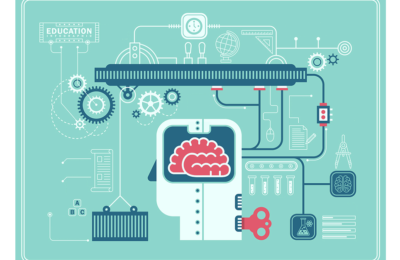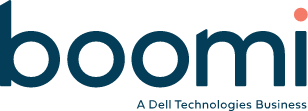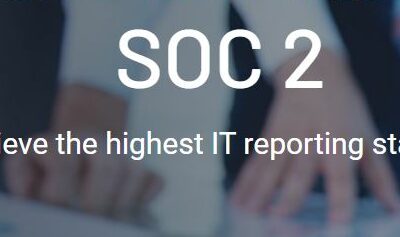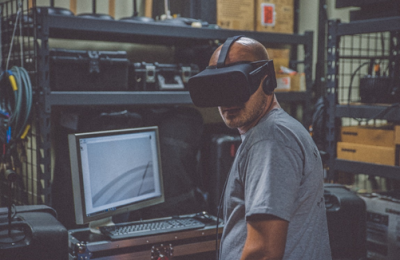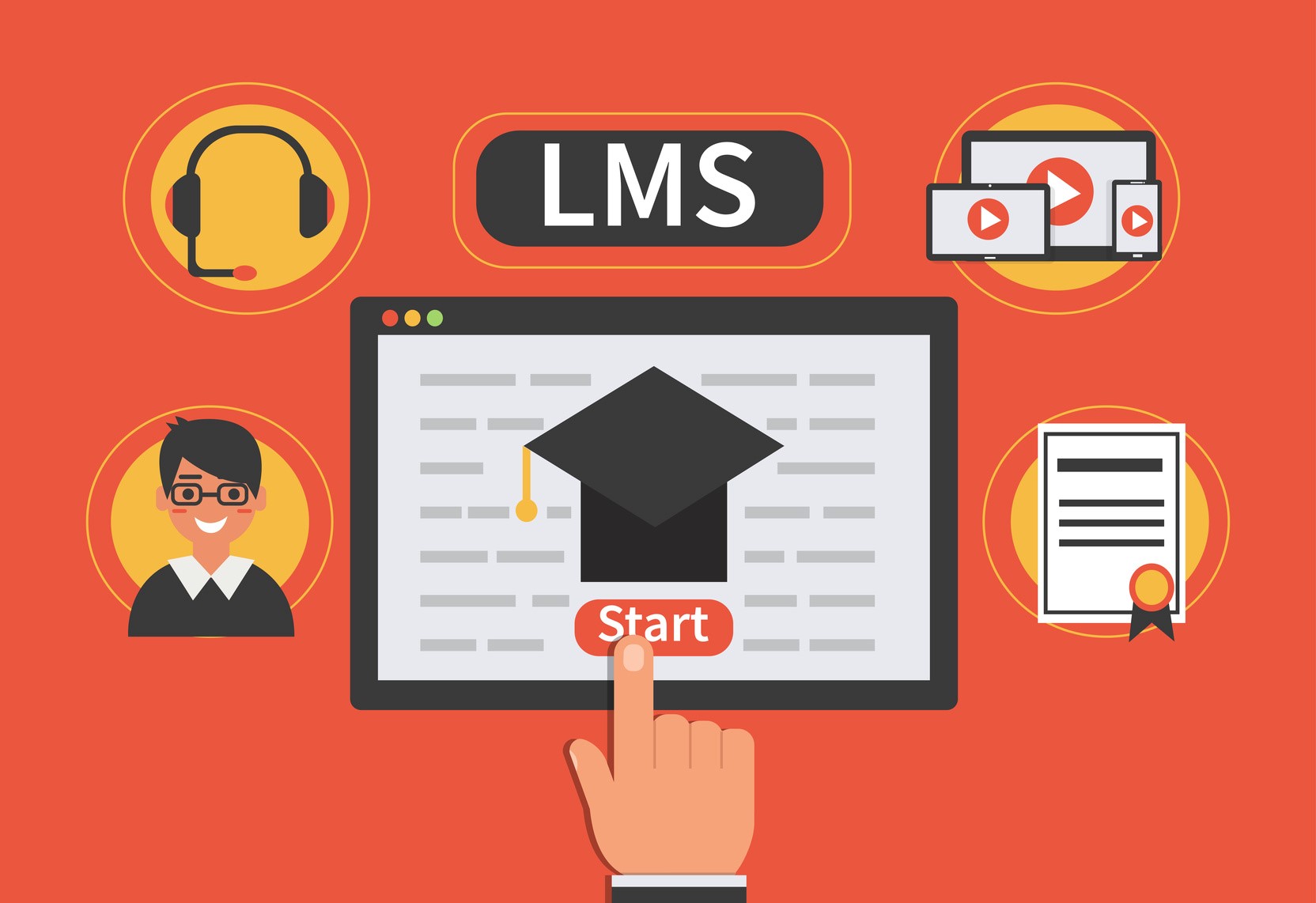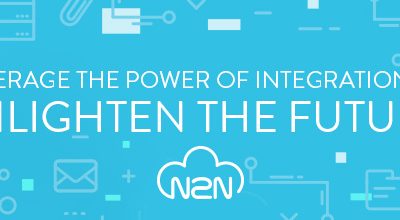EnlightenEd
Solving Data Integration Challenges for the Constantly Connected Student

This is the first in a series of posts discussing critical aspects of the Educause report “Top 10 IT Issues 2020: The Drive to Digital Transformation Begins.”
Although Educause’s annual top ten list of higher ed IT issues was released months before covid disruptions began to work their way into higher ed, its findings and predictions have managed to hold true – and the need to address them has in fact been accelerated due to the changes the pandemic brought on.
One of the key considerations the report focused on was the need for colleges and universities to build a truly student-centered campus in order to attract and retain students.
Prior to the pandemic, this was already a daunting feat – one that meant catering to a demographic used to a ubiquitous connection, integrating multiple devices and operating systems into a seamless experience.
Now, with so much more of the college experience migrating online, it’s even more daunting – and even more crucial to the success of both students and universities.
What is a Student-Centered Virtual Campus?
According to the Educause report, a student-centered campus is focused on creating a student services ecosystem to support the entire student life cycle, from prospecting to enrollment, learning, job placement, and continuing education. The university must approach this from a student’s point of view. The university should make attempts to satisfy the student’s needs, expectations of a seamless digital experience, and future professional goals.
This digital transformation, although inevitable, has been hastened by the current pandemic. It has shown administrators, students, and professors that enabling a seamless learning environment for students is critical as we continue along with our technological evolution. A seamless experience will attract more students and help drive student retention and success. But it does not stop there.
At N2N, we believe in a virtual, student-centered campus that works on any mobile device or desktop environment. We believe that a student should be able to access every resource – whether they are learning resources or administrative resources from a simple application, without the need for multiple logins or applications on the student’s device.
The model needs to incorporate not just learning modalities but must be present with the student through his/her entire campus lifecycle. The model should support student services like billing, financial aid, library, and even cafeteria services directly from this holistic virtual campus module.
At N2N, we are committed to the end-to-end student experience, that begins at recruitment and follows through application, acceptance, financing, learning, student success, graduation, and beyond.
Considering all the departments and disparate systems the above entails, that is quite a challenge for any institution.
An Adaptable Student-Centered Campus System
In addition to the pure technological challenges of combining siloed systems, there is the challenge of future planning. For example, universities were once centers of synchronous learning. But recent worldwide events have shown that this model is no longer sustainable. The incorporation of virtual learning into the traditional college experience is no longer optional for academic institutions. Some institutions are now 100% virtual, but most institutions now support hybrid learning or flex learning to support students and their learning preferences.
Looking beyond the current pandemic, and projecting forward – we believe that students will need more flexibility from their educational institutions going forward, and the academia needs to adapt to succeed in this new student-centric world.
It will be imperative that leadership at institutions choose a set of tools that can be adapted to support whichever learning modalities it may be called on to try. Beyond modalities, leadership must also be able to adapt and scale their systems to integrate new tools for the ever-growing and ever-evolving demand for that seamless online experience.
In a previous blog post we discussed how the N2N Illuminate platform is a solution that allows university systems to easily add and remove any tools they decide on quickly, easily, and affordably, integrating them into one seamless ecosystem.
Contact us to find out how we can help you transition into a student-centered campus.
More EnlightenEd Entries
EnlightenEd
Corona Times: Working From Home – A Startup CEO’s Perspective

“Things do not change; we change.”
Henry David Thoreau
I am pretty sure it was early February, I was on my way to work and heard on NPR that there was a chance that the Tokyo Olympics might get postponed this year. I laughed out loud, and I was 100% sure that this “coronavirus crisis” would be long gone by fall. I had the highest confidence in how the US healthcare system was so much better than Italy’s healthcare system. I just couldn’t see how we would “shut down” our economy because of a “stupid virus.” Also, I was “sure” that this virus would find a cure by the time it reached the United States.
During the month of February, we launched our “lunch and learn” program. This program provided all employees free lunches and we used this time to train the staff on different core technologies they needed to succeed at N2N. I certainly won’t claim that we conducted this training with the premonition of the impending office shutdown, but this training helped prepare us for the incoming tsunami.
I also had a nagging feeling that I was just being hopeful and wanted to prepare the company in case of a contingency. During one of my all-hands staff meetings in February, I informed the team that we would ensure that every team member would get a work-from-home device in preparation for this potential event. I had been discussing the coronavirus and its potential impacts on our offshore operations. We were worried about the proximity of our offshore development center to China, and the possibility of widespread infections if the epidemic reached India because of the overall population, population density, and just the cultural aspects of the country.
Though I was getting them the devices, I was worried about whether my company was ready for a scenario where everyone worked from home. I wondered aloud about the impact it would have on married employees with kids, and employees who lived with roommates, and whether they had suitable conditions to maintain a strict schedule and professional work environment. I was frankly hopeful that we could just maintain the status quo of allowing people to work from home on an ad-hoc basis.
During the early parts of March, as we heard more news about the impact of Coronavirus on Italy, it became clear that this pandemic would impact the US. I started discussing with my Directors and the team on a more regular basis how we could prepare as a team for this incoming disruption. While we made preparations – I was still in denial that this was inevitable. I was frankly hopeful that our geographical separation from Europe could protect us from mass casualties and societal disruptions. I think I was just refusing to see the facts at this point – ignoring all the evidence to the contrary, just because I did not want to face a total disruption of my personal and professional life. I was also concerned about the lives of my employees and their families in this process. Little did I know that our whole nation and worse – our executive leadership was much less prepared than we were. One can argue that they were similarly optimistic and hopeful that the virus would “die” before it reached the US, or it would disappear because of the summer, or that it was just like the flu, and nothing to worry about.
I have to agree that executive leadership of the nation and I were equally in denial about this crisis on March 15th. When one of my employees sent me an email that she wanted to work from home for a couple of weeks, I lost my temper completely. I am embarrassed with myself now – but at that moment, all I could think of was, how could someone shut everything down and not go out of their home, in fear? Why would we let fear dictate our lives? What’s the point of living if we cannot live freely? All of these were thoughtful questions to an emotional predicament, and I did not come to terms with it then. I openly inquired about these conditions in the most indifferent way possible. I was adamant that we needed to continue the status quo, and we shouldn’t give in to fear. Despite all these rejections – as I saw the news trickling down from Seattle and California, I started coming to terms with this new reality – that we would very likely have a significant portion of our staff working from home soon.
“When we are no longer able to change a situation – we are challenged to change ourselves.”
Viktor E. Frankl
After much resistance, I decided to take time and document all my concerns and discussed potential remedies for each of these concerns. Based on the input from my directors, we formulated new work from home policies and created guidelines on working from home. We shared this with employees and explained it to them in detail over a couple of Zoom sessions. We used these sessions not only to illustrate the guidelines but detail the management concerns on the reasons for these policy positions as well.
By the end of the second week of March, schools started shutting down, and that was when we knew we were in for the long-haul. We bought new laptops and distributed them to our staff by the end of the third week.
During the last two weeks of March, we had a few more work-from-home requests come in and accepted them with some deliberation and resistance. I continued in my position that having everyone work from home was “unhealthy” for the company and disrupted our team dynamic. As a result of this prejudice, I was quite reluctant to shut down the office – even when all the evidence alerted me to do otherwise. I was outraged about how this was impacting everything I had planned for this year and was still negotiating with each employee on their WFH request, the length of stay, and personally approving each request. I am not proud of this behavior. Frankly, I am embarrassed about how I behaved during this period.
We are a technology company, and well-suited for everyone to work from home. However – we had hired a few employees during Q1, and I was worried about their proper onboarding if everyone was working from home. I was also concerned about the boundary between my personal and professional lives. As a single dad, with kids at home, I was selfishly thinking about my ability to operate the company working from home. My resistance consumed the second half of March to the new norm – that everyone would be working from home for the next few days. I was trying to deny, resist, bargain, and use every trick in the book of a CEO. Despite these denials, the more I saw the news, the more I was convinced that this was unavoidable and that it was only a matter of time before we shut down the corporate office. I reluctantly prepared for this moment, but still hoped that it would never come. By the end of March, we were down to 25% of our staff working in the office. The rest were working from home, and I was able to understand why. We began making preparations to close down the office by the end of the month. I felt like we were ready, as we shared and explained the WFH policies, bought the needed infrastructure and provided training to the teams during the months of February and March. The “lunch and learn” training we had conducted in February served as a core foundation for all the staff members when we closed down the office at the end of March and allowed everyone to work from home starting April 1st, 2020.
We implemented tactical policies to meet every day at 9 am as a whole team instead of meeting twice a week. This daily meeting allowed us to get our days started with the right priorities. We are a flat organization at N2N, with a highly matrixed organization. I was concerned that our matrixed team approach would fall apart in this new model.
One of my biggest concerns about this work-from-home period was the potential loss of integration between the new employees and the staff that joined before them. I decided to bridge this gap by announcing a fun internal hackathon called N2N Exemplar to build applications using the Illuminate, Dell Boomi, and Ellucian Ethos platforms. The teams and projects selected by executive management and each side had two resources. The resources were asked to design, develop, present, and document their project to the whole staff. I frankly did not know what to expect when we kicked off the project, but I had hopes that this project would allow team members to collaborate and build products. Most importantly – this would create a sense of interconnectedness in this new normal. I also found a way to address my skepticism and lack of confidence in this new modality by creating a common platform to evaluate all my employees.
At N2N, we pride ourselves on building applications and software to transform education delivery, and the overall student experience. The last two months have revealed to me that I have a lot to learn about how my kids use their devices. I can only transform the student experience of the world if I learn how they operate. The quarantine period allowed me to see this firsthand.
The last two months have been very revealing to me on my own personal front as well. Working from home, with kids at home, was challenging during the first week, but we eventually made a schedule and set our boundaries for work and play. My son, daughter, and I have had many vacations over the years and traveled throughout the United States and some parts of Europe. However, the last two months of quarantine have transformed our relationship with each other in more ways than I can articulate. I detailed some of these experiences in my recent posts on LinkedIn.
On a professional front, I have been super impressed with my team on many fronts. They willingly complied with the policies and procedures and recommended additional strategies as well. Most importantly, some of them rose to the challenges of this new environment in ways I did not expect before. The Exemplar challenge revealed their professionalism and their collaborative spirits as well. I feel strongly that the last two months have made us stronger as a team and allowed me to have a deeper understanding of team dynamics and leadership strengths of individuals.
By the end of the month of April, we were more connected than ever, had built stronger inter-team relationships, and had broken down the boundaries between new employees and the rest of the staff. The staff also provided me with the needed confidence that we can work together no matter where we work from, and we can rise to any challenge, no matter how onerous this task is.
I remember a discussion I had with my college friend, Ravi Pydi, who advised me of their company policy; He suggested that “Working from home should not just be a privilege, but it should be a right for any employee that works in a software company.” I did not accept this policy when he told me this, but the last two months of forced lockdown and the mandatory work-from-home system allowed me to see the beauty of this statement and the power of the new normal. If I trust my employees, and if I believe my ability to monitor their performance, it should not matter where they work from and when.
Thanks to this crisis, I will be embarking on creating a Work From Home policy based on trust and respect, instead of relying on the old system of skepticism and privilege.
More EnlightenEd Entries
EnlightenEd
Is Your Institution Ready For Gen Z?

Have you noticed how the generation wars have begun to heat up on social media lately?
Poor Millennials have been picked on for their generation’s perceived failings for years, but the newest up-and-coming generation, Gen Z, has suddenly come into its own and seems to be spoiling for a fight.
With the rise of the dismissive comment “OK, Boomer,” and their unflattering nickname for Gen Xers – the Karen Generation – Gen Z has managed to start an all-out generational frenzy online.
Of course, it’s the exact same angst that every preceding generation has gone through – it’s just that this generation has the tools and the know-how to get their thoughts and feelings out there like never before, as well as the expectation – and reality – of being listened to by a limitless online audience.
And it’s precisely that difference that colleges and universities need to cater to, in order to attract this new generation to their institutions.
Boomers were still completely analog in college, and Gen Xers first experienced the internet as young adults. But Millennials were digital natives, growing up with the internet, so you’d be forgiven for thinking that campus IT changes made for them would still apply to Generation Z.
But you’d be wrong.
Gen Z takes being a digital native one step further. They were born into a world of smartphones, social media, and remote workers, and they’ve been using smartboards, tablets, flipped classrooms and other online learning environments since they started school. They are used to being constantly connected, and to having instant access to any and all content or tools they need, no matter where they are. They have grown up within a completely seamless tech landscape, in which real-world interaction and online interaction are interchangeable.
As they make the transition to college, they expect the tech on campus to keep pace with what they’re used to – and not only to keep pace, but to outstrip whatever their local high school had to offer.
What does that mean for your institution?
- It means every app, tool, and platform your students need to access must be mobile responsive.
- It means you need platforms that make it easy for professors to share the content from their classes – from syllabi and lecture outlines to actual live streams or audio recordings of classes for those who are absent.
- It means your school needs to meet the expectation of this generation that everything they need to succeed is always at their fingertips.
Of course, universities have a much more complex IT ecosystem than your students’ old high schools. And that can make some of these asks seem impossible, or at least impractical – especially when you take integration needs into consideration.
But that’s where N2N’s Illuminate platform comes in.
Illuminate makes it easy for you to integrate any new apps, databases, or platforms with your existing systems, so that adapting with agility to the demands of the next generation is a snap.
No custom coding needed. You just point Illuminate to the new app’s APIs, navigate the configuration forms, and get seamless communication with your entire SIS ecosystem – seamless being the key word here. Exactly the experience Gen Z expects – and exactly what you need to affordably, quickly, and easily ramp up your campus IT.
Contact us today to find out how we can help you.
More EnlightenEd Entries
EnlightenEd
N2N’s Illuminate: Integration By Higher Ed, For Higher Ed

Higher ed is a world unto itself.
Sure, it shares a few characteristics with for-profit businesses…a few with nonprofits…a few with K-12 schools.
But the world of academia is unique.
You know this.
We know this.
And yet, so often, solutions and apps created to manage data for businesses or other kinds of organizations are marketed to colleges and universities as if there were no difference at all.
And since those solutions often come from well-known companies, it’s easy to fall into the trap of thinking they’ll work just as well in higher ed.
But the truth is…they don’t.
You know this.
We know this.
One of the most common things we hear from new clients is that they tried to work with a company whose services and solutions weren’t tailored to higher ed, and because that went so badly, they went out looking specifically for a company with two crucial attributes:
- Solutions made especially for the unique needs of higher ed
- Experience working with universities and colleges to set up and implement those solutions.
And they find precisely that at N2N – and more.
At N2N, we know higher ed.
We know your unique needs, your unique structures, your unique challenges and frustrations.
We provide integration for higher ed, by higher ed.
Not only were our integration solutions developed 100% with higher ed in mind, but we even have team members who come from a higher ed background themselves, and have firsthand knowledge of the exact issues facing higher ed in IT.
And perhaps even more importantly than that, N2N has years of experience working with higher ed institutions large and small, from single schools to statewide systems, addressing their unique needs and solving their unique problems with our flagship solution, the Illuminate platform.
So how exactly can we help your institution of higher ed?
We tame the chaos of data.
You’ve got cloud databases, legacy on-premise systems, and miscellaneous SaaS apps being added all the time. You need your data to flow seamlessly between them all – but right now, it’s not flowing.
Someone has to enter data manually into a certain program.
Someone needs to custom code an integration for that new app.
Queries take ages because they’re so complex.
Data quality is suffering because there’s no way to check it all as it moves from application to application.
Innovation is stalled because no one can make your new ideas a reality.
N2N solves each and every one of these problems, and more.
Our Illuminate API management platform makes integrating all your apps and programs a snap – no time-consuming and expensive custom coding necessary. We can automate data transfer, put data quality assurance protocols in place, streamline queries, support your innovative projects, and more. We’ll help you customize and implement the integration solution that’s right for you
We understand higher ed, and we’re confident that we’ll be able to help you with any challenge you’re facing. So give us a call today for a free demo and more info about how we can help your institution.
More EnlightenEd Entries
EnlightenEd
Mobile Integration on Campus: You’re Not As Future-Ready As You Think

How many mobile devices do you think the average college student brings to campus today?
Let’s see…a laptop, a phone, a tablet, maybe an e-reader?
But if you guessed 3 or 4, you’d be wrong.
Back in 2015, according to an article in EdTech Magazine, students were bringing an average of seven internet-connected devices to college. Seven! In 2015!
Today, all bets are off. New tech is constantly being developed, and new types of devices continue to gain ground. Wearables, anyone?
Just about every new gadget that comes out is wifi-enabled and using its own branded apps to communicate with other devices.
Which seems really awesome to a college student…
…but not so much to their college’s IT department.
Sure, your university may have boosted your network bandwidth, added some mobile apps for students, faculty, and staff, and then done some intensive coding to allow those apps to communicate with your student databases and other existing systems.
But what happens when the next wave of mobile devices comes out, with brand new capabilities and possibilities?
What happens when those new apps aren’t so new anymore, and need to be replaced by the latest best-of-breed SaaS apps?
What happens when students need to connect their VR headsets or drone cameras or smartglasses to the university network to turn in homework or experience a class?
Can you honestly say your campus IT is ready for this future?
You may not be as future-ready as you think – but N2N’s Illuminate API Management Platform can help in every single one of those scenarios. Here’s how:
- New Mobile Devices: Whether it’s the latest incarnation of the iPhone, or a brand new gadget that has yet to be dreamed up, with Illuminate you can rest assured that your IT department will be able to create and manage APIs to integrate that device with your campus data when students start showing up to campus with it. N2N’s Illuminate makes it possible (and easy!) to create APIs to integrate any device into your network, from mobile to wearables and beyond.
- New Apps: And the new apps those new-fangled devices will be able to run – or any new apps that any device will be able to run, for that matter – will also be a non-issue for IT with Illuminate. Faculty need to start using a new app for grades? A great new tuition payment app is developed for student use? A new parent app is rolled out? No big deal. Illuminate’s API Management Platform makes it possible to build APIs to seamlessly integrate those apps with your existing systems in minutes, no coding necessary.
- New Approaches to Higher Ed: Colleges and universities are already pushing the limits and exploring new ways to educate students, from online classes to augmented and virtual reality environments. And N2N is right there, too, developing innovative uses for blockchain technology, such as the Lifelong Learning Ledger, that will change the way higher ed works forever. Illuminate gives colleges and universities the agility not only to adapt to whatever changes come down the pipeline – but to be on the cutting edge of higher ed innovation.
Illuminate takes the burden and worry out of meeting the future – and leaves nothing but the excitement and promise.
If you’d like to find out more about how Illuminate can make your campus truly future-ready, contact us for a free demo today.
More EnlightenEd Entries
EnlightenEd
How Learning Management Systems Have Evolved Over The Years

Learning management systems have become essential to higher education institutions since their inception. Among other functions, LMS allow students and professors to communicate, assign and complete homework, and report and check grades—all through one application on their phone, tablet, or laptop. The change that LMS has brought to class management and learning is huge, but it didn’t happen all at once.
Learning management systems have evolved a great deal over the years, from the humblest of beginnings to the powerful, multi-functional LMS that most students use today.
In their most basic form, LMS began in 1960 with the PLATO program at the University of Illinois. Programmed Logic For Automated Operations wasn’t much by today’s standards, but it was the first step down a path that would eventually lead us to today’s advanced LMS.
After PLATO, LMS gradually became more capable and advanced, until FirstClass came out in 1990. This was the real beginning of what we now consider an LMS, using collaborative features that included private email and public forums. FirstClass pioneered much of what we see today in LMS, and it’s still being used in new iterations.
The pace of new innovations began to pick up after the turn of the century, and one of the first new additions to LMS was Moodle in 2002—the first open-source LMS available. It simply had to be downloaded to a home PC, and anyone could start learning using the LMS. Moodle is also still very popular as an open-source LMS.
In 2005, VirtualOnDemand allowed users to train in software programs using just a web browser for the first time—another significant step in the progress toward modern LMS.
Then in 2008, Eucalyptus became the first free, open-sourced, and cloud-based LMS. Run entirely from the cloud, it required no servers or internal networks, marking a monumental change in the technology behind LMS. 2008 was also the same year that mobile access to the internet exceeded desktop access for the first time. As we now know, mobile access to LMS has taken off, as students expect to be able to access grades, messages, homework, and even quizzes from their mobile devices.
In the late 2000’s and early 2010’s, cloud based computing gained even more momentum, and SaaS learning management systems have grown—allowing campuses to use these advanced programs without installing any new in-house systems. And it’s not just LMS that are using the cloud. Many functions that used to be in-house are being transferred to the cloud.
The SaaS revolution has led to campuses adding new apps and systems like LMS, as well as a variety of others. And all of those new, cloud-based apps have to work together with each other, as well as with older, legacy IT systems. If your campus is looking for a way to integrate all of these disparate apps and systems, then contact N2N Services today. We’ll show you how a comprehensive integration platform can help you get the most out of your LMS, and provide your students with the best possible education.
More EnlightenEd Entries

